#sap software service
Explore tagged Tumblr posts
Text
2 notes
·
View notes
Text
SAP Business ByDesign Training in Sierra Leone without using unlock word With Prompt Edify
Discover how Prompt Edify's SAP Business ByDesign training is revolutionizing businesses in Sierra Leone. Our tailored training programs cover all aspects of SAP Business ByDesign, including finance, logistics, and more, ensuring your team is equipped with the skills needed for success. With convenient on-site training options and ongoing support, we're here to help your business thrive in Sierra Leone's dynamic market. Contact us today to learn more.
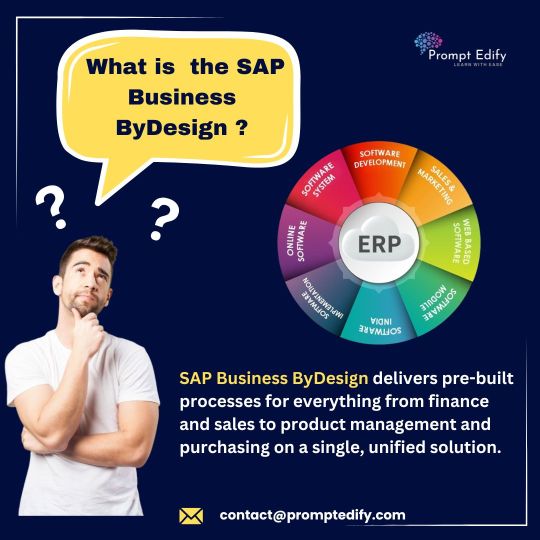
#SAP Business Training#SAP Online Training#SAP Business ByDesign#sap consulting#SAP Software Service#sap s/4 hana finance course#sap certification#sap consulting services#Prompt Edify#career in sap
1 note
·
View note
Text
KGT Applications offers tailored business solutions. We design custom tools to automate tax processes, streamline operations and enhance efficiency to ensure tax compliance and business growth. With a comprehensive suite of enterprise software, businesses can optimize their processes and reach their maximum potential. Contact KGT Applications today!
#tax services#sap consulting services#business automation#business solutions#process management#Enterprise software
3 notes
·
View notes
Text
SAP Business One ERP Partner
A top SAP Business One Partner in India, empowering SMBs' growth with ERP solutions, scaling businesses efficiently.
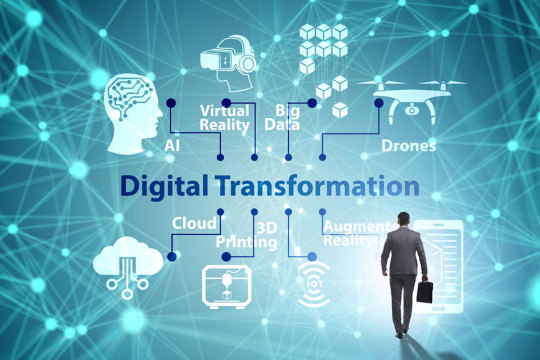
3 notes
·
View notes
Text
What should I look for in an ERP solution
Everyone says that they have an ERP solution at a wide range of price points. How do I choose one for my SME
Longevity
Check if the ERP solution would meet your requirement 5 years from now when you grow say 5X, add new manufacturing locations, add different lines of business. ERPs not only need to address the growth volume of your business but need to adapt to the business process changes required as you grow.
How easy it is to use
Can your average user learn and adapt easily, this is more relevant for SME organizations trying to embrace ERPs , as they are not in a position to employ specially trained skills for ERP implementation or operations. Your cloud ERP should be intuitive to use and as simple and easy as an e-commerce website. Make sure that the user experience is simple and follows the typical standards of any web application.
A SaaS model helps
A SaaS based ERP allows you to start with very low opex costs and minimal investment. Your opex increases as your business grows and you have a more rational approach towards investment in technology.
What about open source
One major advantage of open source solutions is that there is no license cost to acquire it. Other than that, open source solutions really don't provide any additional benefits to the end customer, most of whom would like to concentrate on their business, rather than trying to change or modify the source code. Secondly since it is open source, support and feature enhancements are driven by the community and the community should be as eager as you to add a feature .
Check the total cost of ownership of open source solutions.
1.Requirement understanding costs
2.License costs
3.Hosting or cloud costs and all the licenses required to run the open source
4.Support costs
5.Cost and reliability of making changes in the solution
The connected EcoSystem
Organizations need to leverage on the connected ecosystem. Does your ERP provide open and easy connectivity to marketplaces, statutory bodies, vendor and customer systems, banks and financial intermediaries. Does it have the capability to provide APIs for easy and quick integration and implementation.
What about AI in ERP?
A number of ERP vendors have started incorporating AI in their ERP solutions, and most of them are Cloud ERP providers. It is impossible to incorporate the infrastructure required for AI on an stand alone ERP system, the costs become prohibitive. Cloud ERPs can build AI capabilities leveraging the cloud infrastructure and share the same infrastructure with all the users.
There are already a number of use cases where AI can be used in an ERP, for instance read unstructured documents / emails using AI and convert them to Sales orders, Expenses, GRN in the ERP. Flag transactions which seem irregular by nature, detect fraud or suspicious transaction, increase planning accuracy using AI, continuous auditing, realtime evaluation of your business partners and Ai driven business analytics and Insights
To conclude
Though most ERP vendors will try and match your requirement document either "out of the box" or by so called "minor" customisation, you need to look beyond the current requirements and ensure that your ERP vendor has a track record of adapting and leveraging trends in technology so that you will be able to stay ahead in the future.
Visit Our Site To Know More :-https://proteustech.in/
#erp#erpcloud#erp software#cloud erp#saas#erpdevelopment#ERP software#software services#proteusvision#vision AI#Vision ERP#ERPsolution#cloud computing#sap erp#cloud accounting#cloud solutions#cloud nonsense#VisionCRM
2 notes
·
View notes
Text
#retail pos solutions#erp for retail business#cloud retail erp software#retail pos software#retail pos system software#cloud it solutions#cloud based erp solutions#erp software solutions#business software solutions#software solutions company#Field Service Management Solution#erp for small business#cloud erp#erp implementation#erpcompany#erpdevelopment#canada#erpsolutions#sap erp#erp#erp software
2 notes
·
View notes
Text
Procurement Consulting Services: Enhancing Business Efficiency and Cost Savings

Introduction
In today’s highly competitive business environment, organizations are continually seeking ways to optimize costs, improve efficiency, and strengthen their supply chains. Procurement consulting services play a crucial role in helping businesses achieve these objectives. By leveraging the expertise of procurement consultants, companies can streamline their purchasing processes, negotiate better contracts, and ensure compliance with industry regulations.
What Are Procurement Consulting Services?
Procurement consulting services involve expert guidance and strategic solutions to help organizations improve their procurement and supply chain functions. These services cover various aspects, including cost reduction, supplier management, contract negotiation, risk mitigation, and procurement technology implementation. The goal is to enhance efficiency, reduce expenses, and align procurement strategies with business objectives.
Key Benefits of Procurement Consulting Services
1. Cost Reduction and Savings
Procurement consultants analyze current purchasing patterns, identify cost-saving opportunities, and negotiate favorable contracts with suppliers. Their expertise helps businesses minimize procurement expenses while maintaining quality standards.
2. Supplier Management and Optimization
A well-structured supplier network is crucial for business success. Procurement consultants assess supplier performance, recommend alternative vendors, and establish long-term partnerships to ensure supply chain stability.
3. Risk Mitigation and Compliance
Procurement experts help organizations navigate regulatory requirements and industry standards. They identify potential risks, implement best practices, and ensure compliance with local and international procurement laws.
4. Process Optimization
By streamlining procurement workflows, consultants help businesses reduce inefficiencies and improve productivity. They introduce automation tools and technology-driven solutions to enhance procurement operations.
5. Sustainable and Ethical Sourcing
With increasing emphasis on sustainability, procurement consultants assist businesses in adopting ethical sourcing practices. They help identify suppliers who adhere to environmental, social, and governance criteria.
Procurement Consulting Process
Assessment and Analysis
Evaluate current procurement strategies and performance
Identify cost-saving opportunities and inefficiencies
Strategy Development
Design a customized procurement strategy aligned with business goals
Establish supplier selection and management criteria
Implementation and Optimization
Implement best practices and procurement technologies
Train staff on new procurement procedures
Performance Monitoring and Continuous Improvement
Regularly review procurement performance
Adjust strategies based on market trends and business needs
Industries That Benefit from Procurement Consulting
Procurement consulting services are valuable across various industries, including:
Manufacturing: To optimize raw material sourcing and reduce production costs.
Retail and E-commerce: For supplier negotiation and inventory management.
Healthcare: To ensure compliance with medical procurement regulations.
Construction: For cost control and vendor management in large-scale projects.
IT and Technology: To optimize software and hardware procurement.
Choosing the Right Procurement Consulting Firm
When selecting a procurement consulting service, businesses should consider:
Experience and Industry Expertise: Choose a firm with a proven track record in your industry.
Technology Integration: Ensure they offer modern procurement solutions.
Customization and Scalability: Look for tailored strategies that grow with your business.
Client Testimonials and Case Studies: Verify their success through client feedback.
Conclusion
Procurement consulting services provide businesses with the expertise and strategies needed to optimize procurement functions, reduce costs, and enhance efficiency. Whether a company is looking to improve supplier relationships, implement procurement technologies, or ensure compliance, procurement consultants offer invaluable support. By leveraging professional procurement consulting, organizations can gain a competitive edge and achieve sustainable growth in an evolving marketplace.
For more details, visit us:
Procurement Savings Management Services
Procurement Expense Reduction Solutions
Best Procurement Suites for Cost Savings
#Affordable Procurement Suites for Businesses#Affordable Procurement Software UK#SAP Business One Setup Services
0 notes
Text
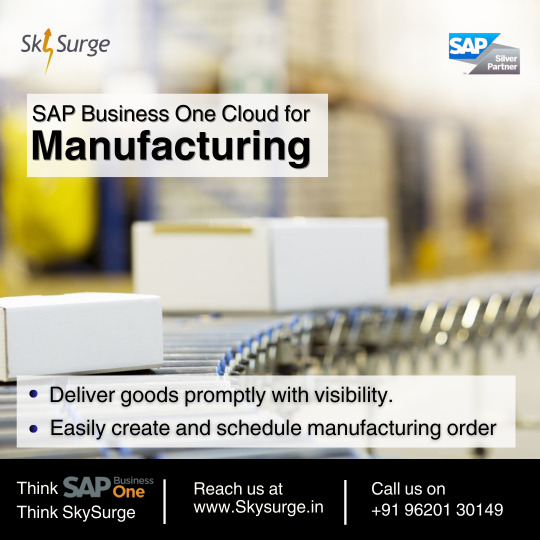
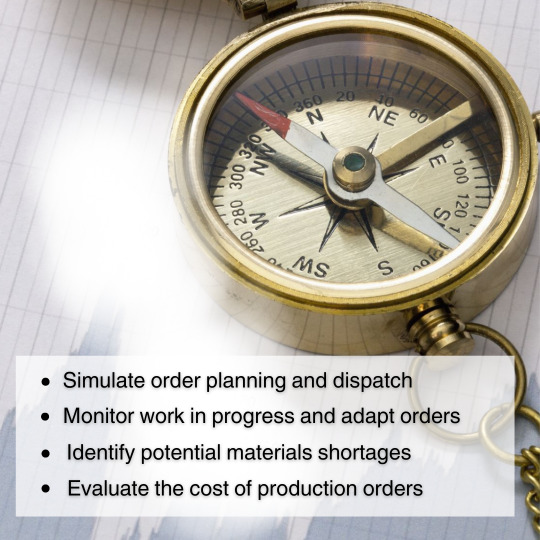
Make manufacturing simple with SAP Business One Cloud! 🌟 Plan and track your work, check for missing materials, and keep everything running smoothly. It's like having a smart helper to make sure you finish on time and save money too
#sap b1#cloud erp#sap erp#clouderp#sap business one#erpsolutions#erp software#erp for small business#sapbusinessone#cloud partner#manufacturing erp#manufacturing industries#manufacturing erp software#manufacturing with netsuite#services#industry#industries#manufacturing supply company#warehouse#development#manufacturing consent
0 notes
Text
Concur Implementation Solutions | FinTrans Solutions | SAP Partner
#sapconcur#sap#concur#expensemanagement#travelandexpensemanagement#expense management systems#expense management software#concur implemention services#concur implementation solution
0 notes
Text
Time Tracking in ERP: Boosting Productivity and Accountability

In today’s fast-paced business environment, effective time management is critical for maximizing productivity and ensuring accountability among employees. As companies seek to optimize their operations, many are turning to Enterprise Resource Planning (ERP) systems to streamline their time-tracking processes. This blog explores the significance of time tracking in ERP, its technical aspects, best practices, and how it can enhance productivity and accountability across an organization.
Understanding Time Tracking in ERP
Time tracking refers to the process of recording and analyzing the time employees spend on various tasks and projects. Integrating time tracking into an ERP system allows organizations to monitor labor costs, project timelines, and employee performance more effectively. ERP systems provide a centralized platform for collecting and analyzing time-related data, making it easier for businesses to allocate resources and assess project profitability.
Importance of Time Tracking in ERP
Accurate Labor Costing: Time tracking enables organizations to calculate labor costs accurately by recording the actual time employees spend on different tasks. This data is essential for budgeting, forecasting, and understanding the true cost of projects.
Enhanced Project Management: By tracking time spent on specific projects, organizations can evaluate progress against timelines, identify bottlenecks, and make data-driven decisions to keep projects on track.
Improved Productivity: With accurate time tracking, organizations can identify areas where employees may be spending excessive time on non-essential tasks. This insight allows managers to implement strategies that boost productivity, such as reallocating resources or optimizing workflows.
Greater Accountability: Time tracking fosters accountability among employees by providing clear records of time spent on various activities. This transparency can lead to improved performance and morale, as employees see the impact of their efforts on overall organizational goals.
Better Resource Allocation: By analyzing time data, organizations can allocate resources more effectively, ensuring that projects have the necessary manpower to succeed. This helps avoid overstaffing or understaffing issues.
Compliance and Reporting: Accurate time tracking is essential for compliance with labor laws and regulations. ERP systems can generate reports that ensure adherence to labor standards, making audits and compliance processes more manageable.
For more details read our blog
#Best ERP Solution#ERP Solution Provider#ERP Partner#ERP Solutions#ERP Services#Leading ERP Solution Provider#1 Cloud based ERP Software#1 Cloud based ERP System#ERP Services and Solutions#ERP Services provider#Best ERP Solution provider#Best ERP Partner#Best ERP services provider#Leading SAP Solutions Provider#SAP Solutions provider#Best ERP solutions#Best ERP solutions provider#Certified SAP Solutions Provider#Trusted SAP Solutions Provider
0 notes
Text
🔗 𝐑𝐞𝐚𝐝 𝐭𝐡𝐞 𝐟𝐮𝐥𝐥 𝐛𝐥𝐨𝐠 𝐭𝐨 𝐥𝐞𝐚𝐫𝐧 𝐦𝐨𝐫𝐞: https://jrsdynamics.com/top-business-management-software-company-in-india-uae-united-states-philippines/
#BusinessManagement#SoftwareSolutions#GlobalReach#JRSDynamics#JRSFamily#ERP#ERPSolutions#Dynamics365#MicrosoftDynamics#DigitalTransformation#CRM#MicrosoftDynamics365#Innovation#BusinessGrowth#BusinessSuccess#BusinessSolutions#erp software#erp software for small businesses#crm software#crm services#techinnovation#startup#inventorymanagement#sap business one erp#it services#cybersecurity#developer#techtips
1 note
·
View note
Text
Explore SAP Solutions & Services by Web Synergies, offering SAP S/4HANA, cloud, migration, & analytics across Singapore, Malaysia, India, USA, UAE, Vietnam & Japan.
0 notes
Text
Understand the key differences between SAP consulting and SAP implementation services. Explore how consulting focuses on strategy and planning, while implementation services handle the technical aspects of deploying and integrating SAP solutions into your business.
#SAP consulting#SAP implementation#SAP services#SAP integration#business software#SAP strategy#ERP consulting#SAP deployment.
0 notes
Text
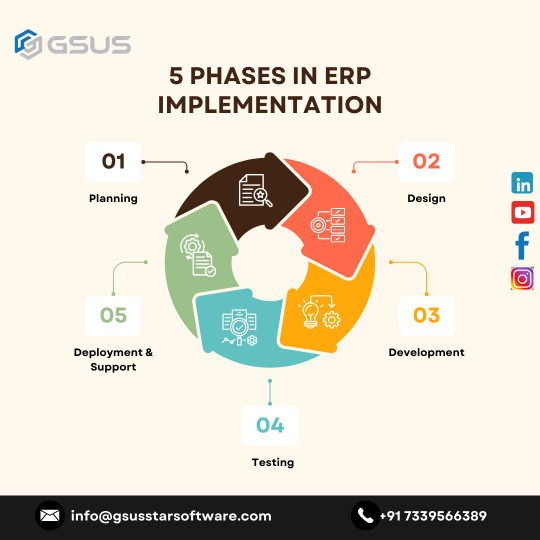
Kickstart your ERP journey with these essential phases: Planning, Design, Development, Testing, and Deployment. Each step is crucial for a seamless transition and maximizing your system’s potential. 1️⃣ Planning: Set clear goals and assemble your team. 2️⃣ Design: Map your processes and customize the system. 3️⃣ Development: Build and integrate features tailored to your needs. 4️⃣ Testing: Ensure everything works smoothly with thorough testing. 5️⃣ Deployment: Go live and provide support for a seamless transition! Transform your business operations and drive efficiency today! www.gsussoftware.in
#business central#cloud erp#erp#app development#erp for manufacturing#erp development company#erp integration#erp software#sap#sap business one#sap s/4hana#sap solutions#sap services
0 notes
Text
Best SAP B1 & ERP Consulting | WBC Software Lab
WBC Software Lab a decade old organization an offshore software development center, entered into ERP Consulting partnered with SAP, as a SAP open ecosystem service partner.
WBC has its center of excellence built to support all its customer's needs onsite and remote. WBC offers consulting services on SAP B1 Implementation, customization, Integration and support. And with WBC's ODC it caters the other needs of the customer beyond ERP implementation on Web / Mobile application development and support services.
URL: https://wbcsconsulting.com/
Focus
Enterprise & Extended Enterprise solutions
Technical Services
Implementations and support
Track record
Long-term client-relationships
Multiple platforms and varied Functional Domains
Close to 100% successful ERP Implementations
People
Key managers involved in the implementation have over 9 years of B1 experience. Involved with SAP B1 since the time it was launched in India
Highly experienced Functional and Technical Consultants will be engaged
On an average each consultant have experience of working for over 10 successful implementation
Product
We are confident about our depth of product knowledge
Have explored and extended the product to its limits during some complex implementations
Have designed and constructed over 30 complex add-ons collectively
Have integrated SAP B1 with various external systems and applications
Have delivered mobility integrated solutions for marquee customers
Capability
Since incorporation partners has over 30 customers
We have implemented extensible solutions for Manufacturing, Sales and Distribution, Healthcare & Services
Have implemented solutions with over 25 localizations
We are very good at Rescue of failed implementation
Extensive domain expertise in finance and productions
Experience
As a team, collectively we have been involved over 150 implementations
The team has handles implementations with cycle time from 2 months to 16+ months
Average overlap of members in the proposed team is 3 years (number of years they have worked together)
#sap business one partner#sap business one cloud#sap business one hana#sap b1 pricing#sap business one solution#sap business one implementation#sap business one partners in karaikudi#sap business one erp software#sap b1 integration#erp consulting services#sap b1 consultant#wbc consulting#connect with wbc#erp expert#erp software consultant#sap implementation consultant#erp business consultant in karaikudi#consulting on erp#SAP ERP Provider#GST Implementation#SAP B1 implementation company#IT company in karaikudi#support services in karaikudi
0 notes